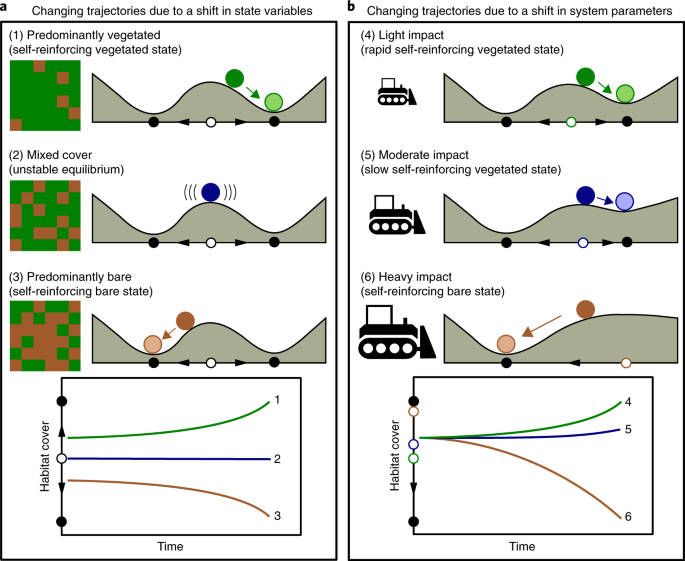Are you faced with the challenging task of mowing steep slopes in your lawn? Look no further, as this article provides essential safety measures to prevent accidents during the mowing process. Whether you are a seasoned gardener or a novice, it is crucial to prioritize safety when tackling these inclines. By following the tips outlined in this piece, you can successfully navigate the treacherous terrain, ensuring a beautiful and accident-free yard.
Choosing the Right Equipment
When it comes to mowing steep slopes, choosing the right equipment is essential for your safety and the effective maintenance of your lawn. There are a few factors to consider when selecting a mower specifically designed for this task.
Consider the type of mower
Not all mowers are suitable for mowing steep slopes. It’s important to choose a mower that is equipped to handle the unique challenges of this terrain. Some options to consider include self-propelled mowers, riding mowers with low center of gravity, or even brush cutters or trimmers for particularly challenging slopes.
Look for a self-propelled mower
Using a self-propelled mower can make mowing steep slopes much easier and safer. With a self-propelled mower, the machine does most of the work for you, reducing strain on your body and providing better control on uneven terrain.
Ensure the mower has a low center of gravity
A mower with a low center of gravity provides better stability on steep slopes. This helps prevent the mower from tipping over and ensures that you maintain control while mowing.
Check the tires for good traction
To effectively mow steep slopes, your mower needs to have tires with good traction. Look for models with deep treads or consider using special tires designed for increased grip on uneven surfaces.
Opt for a mower with a wide cutting deck
A wide cutting deck allows for more efficient mowing, reducing the number of passes required to cover the entire area. This can help minimize the time spent on steep slopes, reducing the risk of accidents.
Inspecting the Area
Before you even begin mowing steep slopes, it is crucial to thoroughly inspect the area to identify any potential hazards and prepare accordingly.
Survey the terrain before mowing
Take a walk around the area to assess the slope and any obstacles that may be present. Look for uneven terrain, large rocks, tree stumps, or any other potential hazards that could pose a danger while mowing.
Identify potential hazards
Once you have surveyed the area, make note of any potential hazards that could cause accidents or damage the mower. This could include areas with loose soil, steep drop-offs, or hidden objects that may be difficult to see while mowing.
Remove any debris or obstacles
Before starting to mow, it is essential to remove any debris or obstacles that could interfere with the mower or cause accidents. Clear away any fallen branches, rocks, or other objects that could get caught in the blades or obstruct your path.
Mark off areas that are too risky to mow
In some cases, certain areas of the slope may be too risky or hazardous to attempt mowing. Mark off these areas with caution tape or flags to ensure you don’t accidentally venture into dangerous territory.
Preparing Yourself
Mowing steep slopes can be physically demanding, so it’s important to take the necessary precautions to ensure your own safety and well-being.
Wear appropriate protective clothing
Before you start mowing, make sure you are dressed in appropriate protective clothing, such as long pants, a long-sleeved shirt, and gloves. This will help protect you from any debris or flying objects that could potentially cause injuries.
Use sturdy footwear with good grip
Choose footwear that provides good traction and support. Avoid open-toed shoes or sandals, as these can be hazardous while working on steep slopes. Instead, opt for sturdy, closed-toe shoes or boots with non-slip soles.
Apply sunscreen and insect repellent
If you’re going to be spending a significant amount of time mowing outside, it’s important to protect your skin from the sun’s harmful rays by applying sunscreen. Additionally, consider using insect repellent to prevent bites from mosquitoes or ticks.
Stay hydrated
Mowing steep slopes can be a physically demanding task, so it’s crucial to stay hydrated throughout the process. Make sure to have a bottle of water nearby and take regular breaks to drink and replenish your fluids.
Mowing Techniques
Using the correct mowing techniques on steep slopes is vital for both your safety and the quality of the lawn.
Mow across the slope, not up and down
When mowing steep slopes, it is best to mow across the slope rather than up and down. This technique provides better stability and reduces the risk of the mower tipping over. Mowing across the slope also helps to prevent soil erosion.
Take your time and go at a steady pace
Mowing steep slopes requires concentration and focus. Take your time and maintain a steady pace to ensure that you maintain control of the mower. Avoid rushing or making sudden movements, as these can increase the risk of accidents.
Avoid sudden turns or changes in direction
Sudden turns or changes in direction while mowing steep slopes can lead to loss of stability and potentially cause the mower to tip over. Instead, make gradual turns and navigate the slope with caution.
Start mowing at the top of the slope and work your way down
To maintain control while mowing steep slopes, it is recommended to start at the top of the slope and work your way down. This allows you to better manage the mower’s movement and prevent it from gaining too much speed on the descent.
Overlap each pass slightly to ensure even cutting
To achieve even cutting on the slope, overlap each pass slightly. This ensures that no areas are missed and helps create a more uniform appearance.
Maintaining Control
Maintaining control of the mower while working on steep slopes is crucial for your safety. Here are some tips to help you stay in control throughout the mowing process.
Keep a firm grip on the handlebars
Always maintain a firm grip on the handlebars of the mower to ensure maximum control. This will help you steer the mower and maneuver it safely on the slope.
Use the self-propelled feature if available
If your mower is equipped with a self-propelled feature, make use of it while mowing steep slopes. This feature reduces the effort required on your part and provides better control over the mower’s movements.
Maintain good balance and footing
Be mindful of your balance and footing while mowing steep slopes. Keep your weight evenly distributed, and avoid leaning or reaching too far in any direction. This will help you maintain stability and minimize the risk of accidents.
Do not mow while excessively fatigued or under the influence
Mowing steep slopes requires focus and energy. Avoid mowing if you are excessively fatigued or under the influence of substances that may impair your judgment or motor skills. It is important to be fully alert and in control while operating the mower.
Dealing with Steep Hills
Steep hills pose unique challenges when it comes to mowing. Here are some ways to approach and handle these situations safely.
Use extreme caution on slopes above 15 degrees
When faced with slopes above 15 degrees, use extreme caution. These slopes can be particularly dangerous to mow, and it may be best to seek alternative methods or professional help for maintaining the grass on such steep terrain.
Consider using a brush cutter or trimmer instead
For very steep slopes that are difficult to mow with a regular mower, consider using a brush cutter or trimmer. These tools are better suited for cutting grass on steep inclines and can provide more control and maneuverability.
Consider hiring a professional landscaper with specialized equipment
If you have steep slopes on your property that require regular maintenance, it may be worth considering hiring a professional landscaper who specializes in working on such terrain. They will have the necessary equipment and expertise to ensure a safe and effective job.
Use a safety harness if necessary
In extreme cases where the slope is particularly steep or treacherous, it may be necessary to use a safety harness or other safety equipment. This additional precaution can provide added stability and prevent falls or accidents.
Weather Considerations
Weather conditions can greatly affect the safety and effectiveness of mowing. Be mindful of these factors when planning your mowing schedule.
Avoid mowing on wet or rainy days
Mowing on wet or rainy days can be very dangerous, as the ground becomes slippery, reducing traction and increasing the risk of accidents. Wait for the grass and soil to dry before attempting to mow on steep slopes.
Check the forecast for wind conditions
Strong winds can make mowing on steep slopes even more challenging, as they may affect the stability of the mower. Check the weather forecast for wind conditions and avoid mowing on windy days to prevent accidents.
Postpone mowing if conditions are not optimal
If the weather conditions are not ideal for mowing, it is best to postpone the task until conditions improve. Safety should always be the top priority, and attempting to mow under unfavorable conditions can lead to accidents or damage to your equipment.
Proper Maintenance
Regular maintenance of your mower is essential for safe and effective mowing on steep slopes. Here are some maintenance tasks to keep in mind.
Regularly inspect and maintain your mower
Inspect your mower regularly to ensure it is in proper working condition. Check for any signs of wear or damage, and address any issues promptly. Regular maintenance can help prevent breakdowns and identify potential safety hazards.
Keep the cutting deck sharp and clean
A sharp and clean cutting deck ensures optimal cutting performance and reduces the strain on the mower. Regularly sharpen the blades and clean any debris or clippings that may accumulate around the deck. This will improve the quality of your cut and prolong the life of your mower.
Check and tighten all bolts and fasteners
Loose bolts and fasteners can compromise the stability and safety of your mower. Regularly check and tighten all bolts to ensure that everything is secure and in place.
Perform routine checks on the engine and fuel system
Regularly inspect the engine and fuel system of your mower to ensure they are functioning properly. Check for leaks, clean or replace filters as needed, and ensure that the fuel tank is properly sealed. Maintaining a well-functioning engine and fuel system minimizes the risk of malfunctions or accidents.
Training and Education
Acquiring proper training and knowledge on safe mowing practices is essential for preventing accidents on steep slopes. Here’s how you can educate yourself on the subject.
Acquire proper training and knowledge on safe mowing practices
Consider participating in training courses or workshops that focus on safe mowing practices, especially for mowing on steep slopes. These courses can provide valuable information on techniques, tools, and safety measures specific to this type of terrain.
Consult the mower’s user manual for guidelines
The user manual provided by the mower manufacturer is a valuable resource for understanding the specific safety guidelines and recommendations for your particular model. Study the manual thoroughly and follow the manufacturer’s instructions to ensure safe operation.
Take advantage of educational resources and courses
There are numerous online resources, videos, and articles available that provide valuable information on safe mowing practices. Take advantage of these resources to educate yourself on proper techniques and safety measures.
Stay updated on new safety standards and recommendations
Safety standards and recommendations may evolve over time as new research and technologies emerge. Stay informed about any updates or changes in safety standards related to mowing on steep slopes, and adapt your practices accordingly.
Seeking Professional Help
In some cases, seeking professional help may be the safest and most practical option for mowing steep slopes. Here’s why you should consider outsourcing the task.
Consult with a professional landscaper for advice
If you are uncertain about your ability to safely and effectively mow steep slopes on your own, consult with a professional landscaper. They can provide expert advice and guide you in choosing the best options to maintain your lawn.
Consider outsourcing the mowing of steep slopes
If you have steep slopes that require regular maintenance and you are not comfortable or equipped to handle the task yourself, consider outsourcing the mowing to a professional landscaper. They will have the necessary expertise, equipment, and safety measures in place to handle the job safely and efficiently.
By following these guidelines and taking the necessary precautions, you can effectively prevent accidents and maintain your lawn’s beauty even on the steepest of slopes. Remember always to prioritize safety and seek professional help or advice if needed. Happy mowing!





